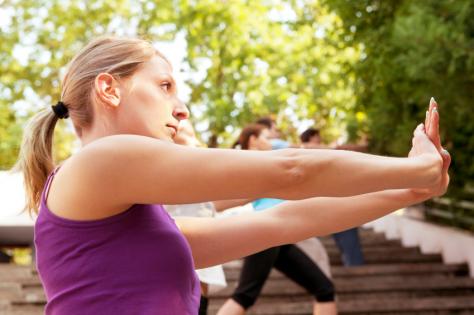Not everyone wants to go to the gym – either because of cost or it’s downright intimidating - yet many people also think this is the only way to get the right type of physical activity. That’s not so.
There are five exercise options that can do wonders for your health. They’ll help keep your weight under control, improve your balance and range of motion, strengthen your bones, protect your joints, prevent bladder control problems, and even ward off memory loss. You don’t have to do all of them, although some mix and match is good. But try to do at least one for at least 150 minutes (2.5 hours) each week.
1. Swimming
You might call swimming the perfect workout. The buoyancy of the water supports your body and takes the strain off painful joints so you can move them more fluidly.
“Swimming is good for individuals with arthritis because it’s less weight-bearing,” explains Dr I-Min Lee, Professor of Medicine at Harvard Medical School. Research finds that swimming can improve your mental state and put you in a better mood. Water aerobics is another option. These classes help you burn calories and tone up.
2. Tai Chi
Tai chi — a Chinese martial art that incorporates movement and relaxation — is good for both body and mind. In fact, it’s been called “meditation in motion.” Tai chi is made up of a series of graceful movements, one transitioning smoothly into the next. Because the classes are offered at various levels, tai chi is accessible, and valuable, for people of all ages and fitness levels.
“It’s particularly good for older people because balance is an important component of fitness, and balance is something we lose as we get older,” Dr Lee says.
Take a class to help you get started and learn the proper form. You can find tai chi programs at your local YMCA, health club or community centre.
3. Strength training
If you believe that strength training is a macho, brawny activity, think again. Lifting light weights won’t bulk up your muscles, but it will keep them strong.
“If you don’t use muscles, they will lose their strength over time,” Dr Lee says. Muscle also helps burn calories. “The more muscle you have, the more calories you burn, so it’s easier to maintain your weight,” says Dr. Lee.
Strength training might also help preserve your ability to remember. Before starting a weight training program, be sure to learn the proper form. Start light with just one or two pounds. You should be able to lift the weights 10 times with ease. After a couple of weeks, increase that by a half-a-kilo or more. If you can easily lift the weights through the entire range of motion more than 12 times, move up to slightly heavier weight.
4. Walking
Walking is simple, yet powerful. It can help you stay trim, improve cholesterol levels, strengthen bones, keep blood pressure in check, lift your mood, and lower your risk for a number of diseases (diabetes and heart disease, for example).
A number of studies have shown that walking and other physical activities can improve memory and resist age-related memory loss. All you need is a well-fitting and supportive pair of shoes.
Start with walking for about 10-15 minutes at a time. Over time you can start to walk farther and faster until you’re walking for 30 to 60 minutes on most days of the week.
5. Kegel exercises
These exercises won’t help you look better, but they do something just as important — strengthen the pelvic floor muscles that support the bladder. Strong pelvic floor muscles can go a long way toward preventing incontinence. While many women are familiar with Kegels, these exercises can benefit men too.
To do a Kegel exercise correctly, squeeze and release the muscles you would use to stop urination or prevent you from passing wind. Alternate quick squeezes and releases with longer contractions that you hold for 10 seconds, and then release for 10 seconds. Work up to three sets of 10-15 Kegel exercises each day.
Dr Lee says any of the things we do for fun (and work) count as exercise.
"Raking the yard counts as physical activity. So does ballroom dancing and playing with your kids or grandkids.
"As long as you’re doing some form of aerobic exercise for at least 30 minutes a day, and you include two days of strength training a week, you can consider yourself an 'active' person.



















__small.png)










